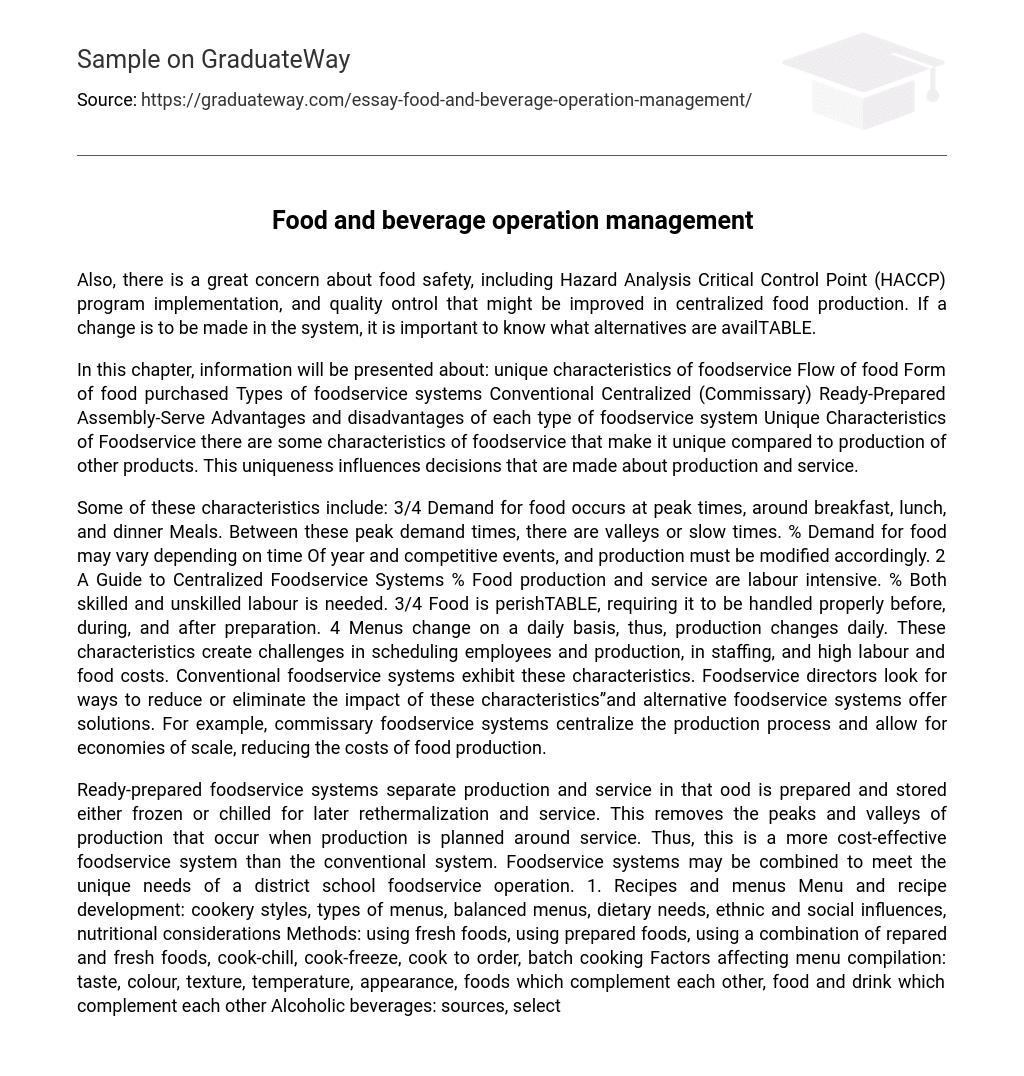Any waste should be noted and a separate cost line for it should be created in the expense part of the financial statement. Once this is done we can then account for any items which were not directly sold to the guests. When we know the true amount for the cost of the food sold (the actual cost) we can then compare this against what the cost should have been (the standard cost). At this point it is possible to determine the effectiveness and efficiency of the kitchen operation.
Calculating The Actual Food Cost Opening Inventory (the closing inventory from the previous period) PLUS Purchases (the invoice amounts from each of the Daily Purchases Register files) MINUS Closing inventory (the goods counted after the close of business of the last ay of the period) MINUS any adjustments – cost of staff meals – waste report costs – food transferred to the bar (or other departments goods leaving them is accounted for on a requisition and that requisition becomes an invoice for the kitchen or department receiving them.
This is common in a hotel with central stores which sends out goods to various units within the hotel. In such an operation each department would have to account for their food costs independently and the requisitions would be their purchases. Sometimes, however, goods go directly to the kitchen rather than to the central stores. Examples of this might be bread and milk where the bakery and dairy place the fresh goods directly in the kitchen instead of the central storeroom.
Any such goods need to be carefully accounted for and included in the food cost total. As We will see in the controls section later, it is important to be especially careful when accounting for these goods as it is possible for theft to) – any goods returned to suppliers for credit any other goods transferred out (to other units for example) PLUS goods transferred in from other departments (wine for cooking from the bar) any other goods transferred in Some operations have controlled storerooms where any occur here.
Financial statement in food and beverage operation Product oriented companies create a production budget which estimates the number of units that must be manufactured to meet the sales goals. The production budget also estimates the various costs involved with manufacturing those units, including labour and material. Cash Flow/Cash budget: The cash flow budget is a prediction of future cash receipts and expenditures for a particular time period.
It usually covers a period in the short term future. The cash flow budget helps the business determine when income will be sufficient to cover expenses and when the company will need to seek outside financing. Marketing budget: The marketing budget is an estimate of the funds needed for promotion, advertising, and public relations in order to market the product or service. Project budget: The project budget is a prediction of the costs associated with a particular company project.
These costs include labour, materials, and other related expenses. The project budget is often broken down into specific tasks, with task budgets assigned to each. Revenue budget: The Revenue Budget consists of revenue receipts of government and the expenditure met from these revenues. Tax revenues are made up of taxes and other duties that the government levies. Expenditure budget: A budget type which include of spending data items. (Arthur , 2003)
Сost and pricing process A cost sheet is a statement of cost incurred, or to be incurred, for producing a given volume of output or for rendering services, as the case may be. Preparation of a cost sheet helps cost control and pricing decisions. (Banerjee, 2006) Cost sheet for Hospitality The standardised recipe cost sheet is a record of the ingredient cost required to produce an item sold by your Operation. This standardised cost sheet can be created using any basic spreadsheet software. Dopson, 201 0) Advantages of cost sheet in hospitality New employees can be better trained. Helpful to maintain food laws. Helpful to explain about any food item to the guest. Helpful for accurate purchasing in order to gain profits out of business.
The role varies according to the size and nature of the business. In a small establishment, the catering manager usually has a hands-on role and IS nvolved in the day-to-day running of the operation including staff supervision and events management.





